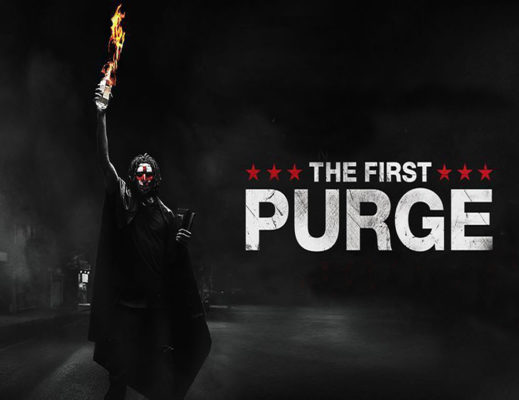
Exploitation can be righteous. For all the talk of shoddy production values, stiff acting, lurid content and narrative wonkiness that that term can dredge up, the best exploitation films are often also possessed with a seething, incendiary rage borne from being an outsider to the established Hollywood order. When Wes Craven made LAST HOUSE ON THE LEFT, he was little more than an egghead academic, raised in the repressive environment of a religiously devout single parent household, who was pouring all his impotent anger about the fractious landscape of early ‘70s America–the Vietnam War, the Watergate scandal, the perceived romanticization of violence in films like BONNIE AND CLYDE–into a cathartic, furious stew of unbridled, apocalyptic violence and bloodshed. It didn’t matter that the film, technically, is a rather tonally inept mix of pedestrian camera work, out of place comic schtick, and even more inappropriate country-yokel music cues. There’s a raw, primal power to it–a palpable, savage sense of Craven’s frustration with the world–that makes it endure.

Blaxploitation, similarly, gave an underserved audience a grindhouse outlet for their anxieties and angers with the world at large. Films like COFFY, SOUL VENGEANCE, and BLACK CAESAR could sometimes come off as squalid, low rent affairs when compared to the big budget films of their contemporaries, but they were alive with the id of their audience, giving voice to them in ways the more respected work of Hollywood could never do.
THE PURGE films are the modern day multiplex answer to those old drive-in-lower-bill funk and gore sagas, offering unsubtle cathartic release in the form of barnstorming B-movie action/horror setpieces ripped off from the likes of John Carpenter and Walter Hill. There’s a reason that the sequels, in a rare reversal of form from franchise norms, have improved on the very first PURGE movie: that film took it’s intriguing premise–what if, for one night a year, all crime (including murder) was legal?–and buried it under a milquetoast home invasion plot that pitted an upper middle class white yuppie nuclear family against even more yuppie-ish masked preppie-coat hooligan psychos. Once the PURGE movies embraced their renegade spirits–their consciousness, their worldly anger–they got better. And THE FIRST PURGE is the best one yet.
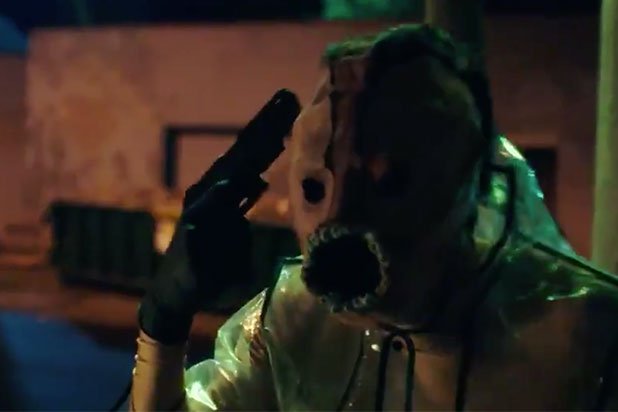
James DeMonaco, who wrote and directed all the previous films in the PURGE saga (and is also the architect of the upcoming TV series based on it), has this time given the reins over to a new director, Gerard McMurray, and the changeover has opened the film up to a new spirit of pissed off indignation. McMurray has made the throttling futuristic schlock nightmare of the Black Lives Matter era. This is the PURGE Blaxploitation film, complete with a heroic, gold-hearted drug-pusher good guy lead from right out of SUPERFLY.
It’s a film about how the ways the government kills and destroys the lowest classes, almost all of whom are not-white. It’s set on the night of the very first Purge, which is being held as a psychological experiment, on the self-contained play area of Staten Island. The experiment’s creator, Dr. Updale (played by the film’s only name star, Marisa Tomei, who is perfunctorily wasted in a mostly expository role), designed the purge as a mechanism for allowing people to let off their most aggressive steam. But when the experiment proves to be one more of id-bearing wildness than murder–drunken block parties and exhibitionist hanky panky seem to be more the order of the day–the neocon New Founding Fathers of America juice the action to make sure that people get on board with their form of homicidal demagoguery.
The film’s hero is swaggering, slick inner city dope pusher, Dmitri (played with a stolid charismatic cool by Y’lan Noel), who is community-minded enough to sense something is amiss with the promises of this hellish propaganda program. His ex, Nya (Lex Scott Davis) is a leading anti-Purge activist who doesn’t realize that her younger brother, Isaiah (Joivan Wade) sees the night as a chance to get even with the cackling, scarred madman bully Skeletor (Rotimi Paul). For his part, Skeletor is the closest thing this franchise has gotten to a classic monster: with his gangly, gnarled frame and tribal facial scars, he’s a giggling, lip-smacking loon looking to kill and Paul plays him with a juicy, demented sociopathic excitement.
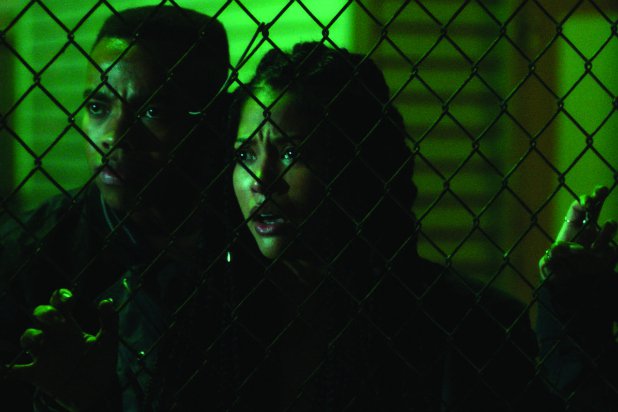
As the three leads are individually cast out into the Staten Island night–Isaiah in search of Skeletor, Nya in search of her brother, and Dmitri after facing an attack from a rival on his own turf–they are beset by a host of miscreants and delinquents in a series of well-staged setpieces. These include a pair of giggling old ladies who lace teddy bears with explosives and a group of mad-dog homeless warriors.
McMurray directs these setpieces with a grimy comic book garishness that reminded me a bit of the Pop-genre style of Ernest Dickerson. There’s a conceit here that those who agree to Purge–those who sign up to unleash their ids in exchange for money–are given neon-glowing contact lenses designed to record their purging to be broadcast live to gawking national audiences at home. It’s a kicky sci-fi conceit, but it allows McMurray to play with an eerie funhouse vibe whenever we see see those vibrant fluorescent eyes peering out from the darkness like some malevolent raver demon. McMurray has a more visually textured eye for atmospherics than DeMonaco ever displayed–there’s a breathtaking scene set in the midst of fog illuminated by one lonely iridescent light–but he does fall prey on occasion to DeMonaco’s hectically chaotic editorial rhythms (thankfully he goes light on the dodgy CGI fireball effects).
THE FIRST PURGE is pure, ham-fisted political pulse-pounder pulp, as subtle as a hammer to the noggin. But the images stick with you. Goon squads in KKK regalia drive jeeps through the streets and there are hallways littered with bodies as blackface-masked mercs, lead by a Charlton Heston lookalike in a vinyl Nazi-fetish German coat, let loose torrents of automatic fire. It’s a very of-the-moment topical thriller and McMurray’s images hold an ugly, bloodstained punch to them. But that’s the spirit of exploitation. THE PURGE movies have never been great films, but they are as jagged, imperfect, and volatile as their deeply enraged trash forebears, and THE FIRST PURGE is the best of the them–fierce, impassioned, furious. Compared to the superhero films and bloated, lumbering blockbusters it is playing alongside in multiplexes it may be junk, but it’s the junk we need right now.
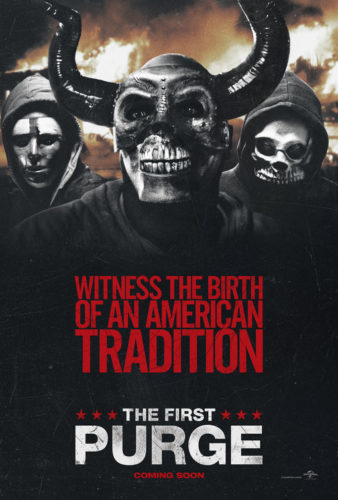
–Johnny Donaldson (@johnnydonaldson)
Tags: Blumhouse, Gerard McMurray, James DeMonaco, Joivan Wade, Lex Scott Davis, Marisa Tomei, The First Purge, The Purge, Y'Lan Noel

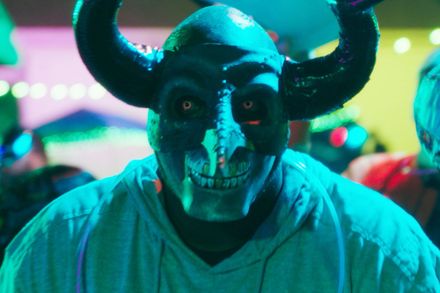
No Comments